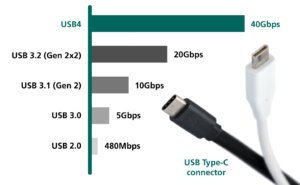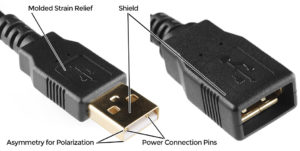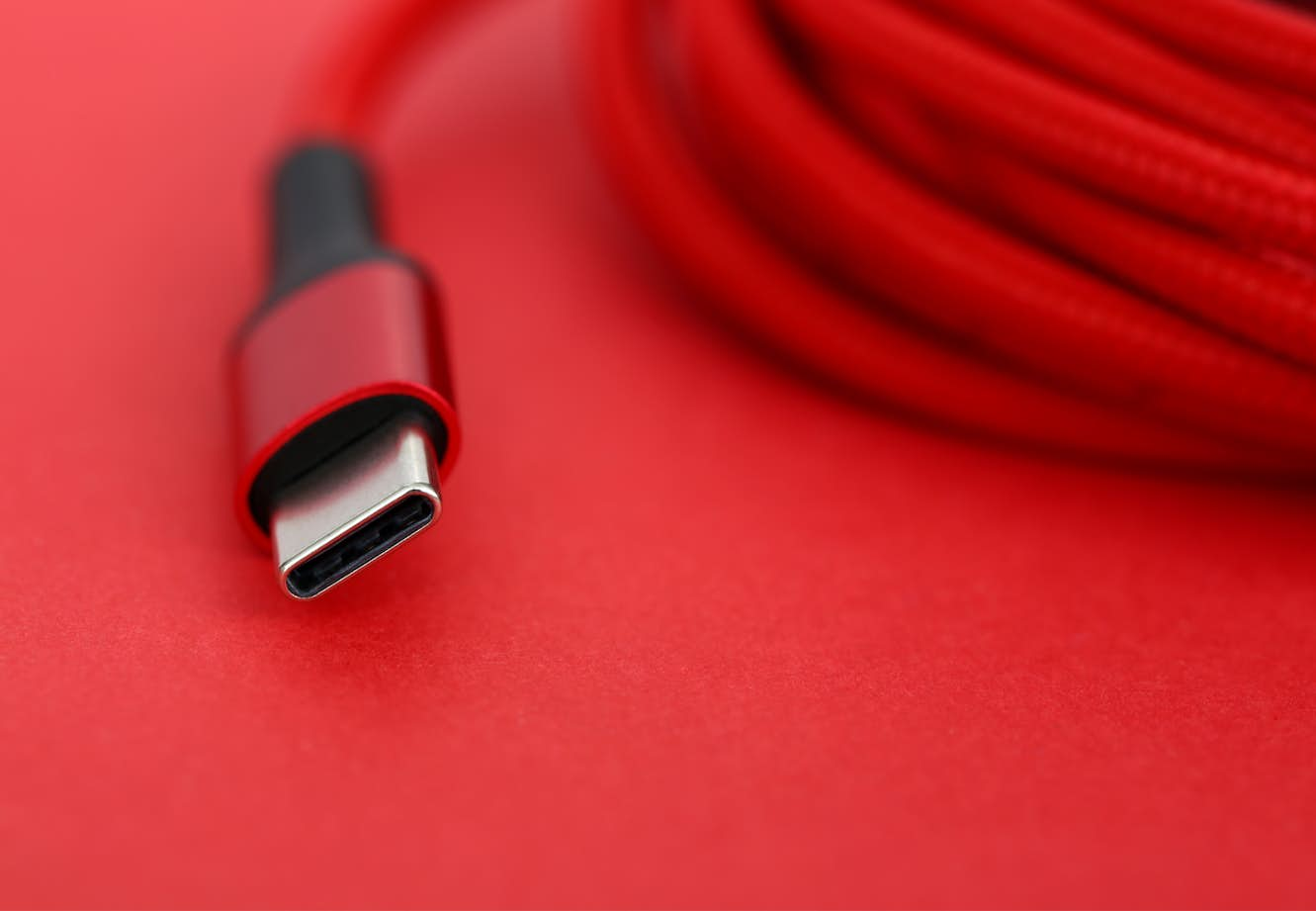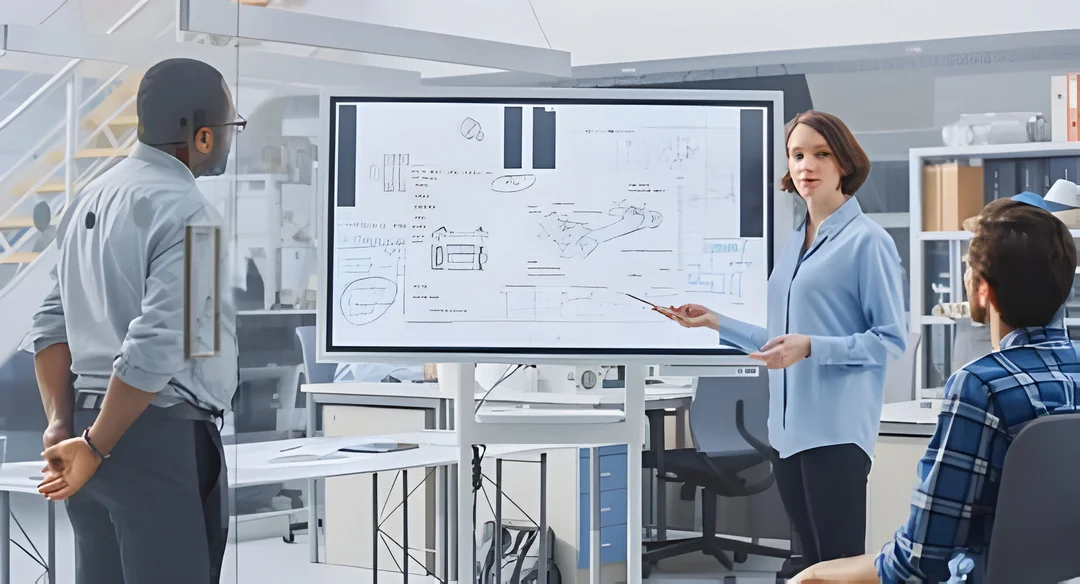In today’s digital age, USB cables are essential for connecting devices and transferring data. This comprehensive guide explores what is a USB cable, its evolution, inner workings, functions, real-world applications, challenges, and boundless potential
Evolution of USB
The odyssey of USB cables reveals a tale of technological leaps, each standard a chapter in this evolution.

USB 1.0/1.1. – Groundbreaking Universal Connectivity
When USB 1.0/1.1 was introduced it brought about a change by revolutionizing the way devices communicate with each other through data speeds. Although its capabilities may seem modest compared to todays standards it laid the foundation for connectivity. Allowed devices to interact seamlessly on a universal platform.
USB 2.0. – Advancing Compatibility
The arrival of USB 2.0 marked a step, in achieving compatibility between different types of devices while also increasing data transfer speeds. This version bridged the gap enabling not transfers but also expanding the range of interactions possible between peripherals and hosts.
USB 3.0/3.1/3.2. – The Era of SuperSpeed
USB 3.0 ushered in the era of SuperSpeed completely transforming the dynamics of data transfer capabilities. This iteration enabled lightning exchanges pushing boundaries and redefining what was previously achievable with USB technology. Building upon this foundation, USB 3.1 and 3.2 further refined these capabilities enhancing both data transfer rates and power delivery mechanisms.
USB 4.0. A – Fusion of Protocols
Reaching its pinnacle with USB 4..0 this remarkable version brings together the best of both worlds by combining USB and Thunderbolt protocols.More than an evolution this convergence promises a leap, in data speeds and compatibility—a culmination of years of innovation that showcases technologys ability to surpass limitations.
The advancements, in USB standards truly showcase creativity and our unending quest, for effortless connectivity. As technology keeps advancing USB standards will naturally continue to evolve, incorporating speeds, improved functionalities and an interconnected technological environment.
Anatomy of a USB Cable
USB cables are elegant in their simplicity, where key components intricately mold their form:
Connectors: The nucleus, spanning forms – Type-A, Type-B, Type-C, Micro-USB, Mini-USB, tailored for specific roles.
Cable Types: Varieties like USB-A to USB-B, USB-A to USB-C, Micro-USB to USB-C, cater diverse devices and interactions.

Functionality and Uses
USB cables epitomize connectivity, donning multifaceted roles:
Data Transfer: Effortless file syncing across devices, fueling productivity and leisure.
Device Charging: Lifeblood for device revival, adhering to power delivery benchmarks dictating speed.
Peripheral Connection: Bridging peripherals to computers, ushering seamless plug-and-play encounters.
Audio and Video Transmission: USB’s metamorphosis extends to audio-video signals, USB-C embracing HDMI and DisplayPort duties.
Cable Types
USB cables parade in forms tailored to diverse demands:
USB-A to USB-B: Linking printers, scanners to computers, a classic rendezvous.
USB-A to USB-C: Linking old and new, channeling data and charge.
USB-C to USB-C: Swift data transfer, versatile device interlinks.
Micro-USB to USB-A/C: Mobile mate, enabling charge, data flow.
USB Cables in Practical Scenarios
USB cables pivot the course of interactions across scenarios:
Mobile Devices: Reviving, transferring, sustaining smartphones, tablets.
Computers: Fostering external storage, peripherals’ ties, enhancing efficiency.
Audio and Video Equipment: Weaving audio interfaces, transmitting crisp video, empowering external displays.
Common Issues and Considerations
Amidst triumphs, certain caveats warrant reflection:
Cable Quality: Opting for quality unlocks seamless speeds, steadfast charge; dodging inferior cables averts disappointment.
Compatibility: Grasping USB standards precludes device dissonance, harmonizing connections.
Data Security: Public charging hubs incite security alarms, underscoring data safeguarding during replenishing.
Future of USB Cables
USB cables are a part of everyday life and come in a range of types and versions.

Continued Evolution: Akin to time-traveling, faster paces, expanded capabilities beckon, tandem with tech evolution.
Wireless Alternatives: Amid wireless marvels, cable-free data flow, charge tantalize imminent horizons.
Conclusion
In today’s hyper-connected world, the USB cable emerges as a testament to innovation and technology’s evolution. The journey through USB standards showcases relentless pursuit of speed, capabilities, compatibility. The USB cable’s design, with tailored connectors and cable types, emerges elegantly. Functions astonish data transfers, charging, connections, audio-video transmission. Diversity ensures versatile links. In real-world scenarios, USB cables power mobiles, computers, AV equipment. Acknowledging issues quality, compatibility, security underscores mindful connectivity. The future beckons with more speed, integration, wireless possibilities. In conclusion, the USB cable threads a tale of progress and connection, a digital lynchpin.




